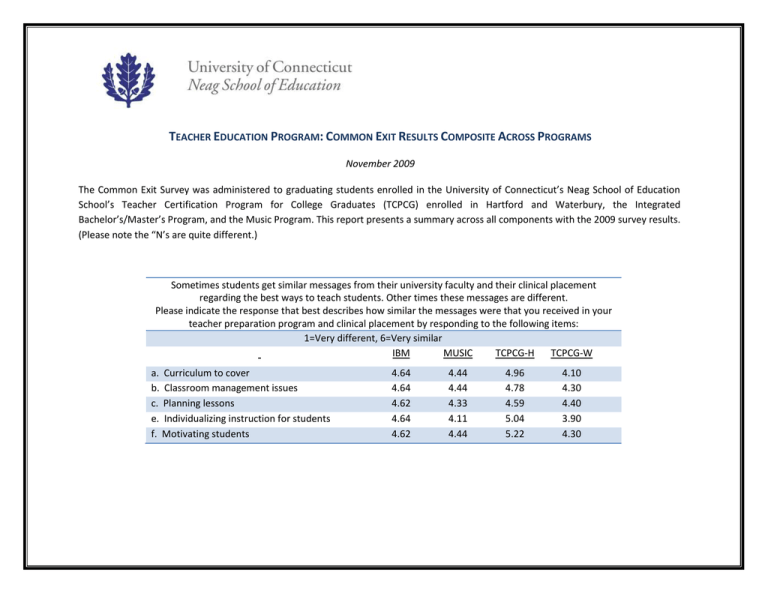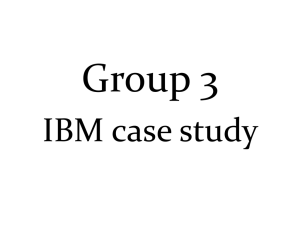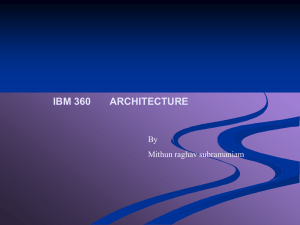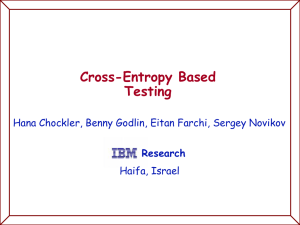T E P :
advertisement

TEACHER EDUCATION PROGRAM: COMMON EXIT RESULTS COMPOSITE ACROSS PROGRAMS November 2009 The Common Exit Survey was administered to graduating students enrolled in the University of Connecticut’s Neag School of Education School’s Teacher Certification Program for College Graduates (TCPCG) enrolled in Hartford and Waterbury, the Integrated Bachelor’s/Master’s Program, and the Music Program. This report presents a summary across all components with the 2009 survey results. (Please note the “N’s are quite different.) Sometimes students get similar messages from their university faculty and their clinical placement regarding the best ways to teach students. Other times these messages are different. Please indicate the response that best describes how similar the messages were that you received in your teacher preparation program and clinical placement by responding to the following items: 1=Very different, 6=Very similar IBM MUSIC TCPCG-H TCPCG-W a. Curriculum to cover b. Classroom management issues c. Planning lessons e. Individualizing instruction for students f. Motivating students 4.64 4.64 4.62 4.64 4.62 4.44 4.44 4.33 4.11 4.44 4.96 4.78 4.59 5.04 5.22 4.10 4.30 4.40 3.90 4.30 Aspects of Teaching Please respond to the following items to indicate your confidence in different aspects of your teaching as you are completing your teacher preparation program. 1=Not at all confident, 5=Very confident IBM MUSIC TCPCG-H TCPCG-W a) Provide stimulating lessons for students 4.43 4.44 4.67 4.40 b) Motivate students to participate in academic tasks 4.10 4.00 4.56 4.10 c) Change the way to present material to accommodate the learning needs of all students 3.93 4.00 4.33 4.20 d) Create learning experiences that are meaningful to students 4.24 4.33 4.74 4.30 e) Know what procedures to follow if you believe a student has a disability 3.07 3.11 4.15 4.20 f) Implement a variety of teaching strategies to reach students who are not native English speakers g) Teach even the most challenging students 2.69 2.89 3.26 3.80 3.29 3.56 3.85 4.10 h) Effectively address classroom management issues 3.74 3.89 4.26 3.60 i) Get along well with students who struggle with behavioral issues in school 3.88 3.56 4.59 4.00 j) Facilitate learning for all of your students 4.14 3.11 4.63 4.10 k) Adapt curriculum to accommodate individual differences l) Develop a strong rapport with your students 3.83 4.00 4.48 3.90 4.59 4.78 5.37 4.40 m) Teach students with different cultural backgrounds from your own 4.10 4.33 4.89 4.30 n) Integrate educational technology into your lessons 3.81 4.67 4.74 4.20 o) Effectively teach special education students 3.00 3.22 3.92 3.60 p) Respect cultural backgrounds different from your own 4.48 4.44 5.30 4.50 q) Use effective classroom assessment strategies 4.12 4.33 4.70 4.20 r) Use formalized assessment (i.e., CMT, CAPT, normreferenced) results 3.60 3.00 3.96 3.70 s) Develop a strong rapport with parents of your students 3.86 4.56 4.59 4.10 t) Use computers effectively in the classroom 4.02 4.56 4.70 4.30 u) Help your students better learn to use technology 3.79 4.56 4.67 4.40 v) Know all the content that you will be required to teach to your students 3.60 4.11 4.63 4.00 w) Prepare physically space and materials to deliver instructions 4.12 4.22 4.67 4.00 x) Design lesson plans to provide all learners access to the general curriculum 4.07 3.89 4.89 4.00 y) Modify lesson plans to address needs of students with disability 3.57 3.67 4.74 3.80 z) Maintain a structured learning environment 4.29 4.11 4.89 4.10 aa) Use a small number of positively stated expectations 4.40 4.11 4.89 4.40 bb) Reinforce appropriate behavior 4.43 4.22 4.89 4.30 cc) Respond to inappropriate behavior 4.00 4.00 4.26 4.00 dd) Implement individualized behavior strategies for students with disabilities 3.40 3.56 4.26 3.90 ee) Introduce lesson content ff) Maximize student engagement gg) Provide performance-based feedback 4.43 4.21 4.05 4.22 4.11 4.33 4.74 4.33 4.73 4.20 4.00 4.10 hh) Review lesson content at the end of instruction 4.40 4.11 4.78 4.00 ii) Teach lesson content relevant to student population 4.07 4.22 5.07 4.20 jj) Assess student ability and/or knowledge prior to instruction 3.93 4.22 4.59 4.20 kk) Assess student outcomes related to IEP during instruction 3.02 3.22 4.19 3.80 ll) Assess student response to instruction 3.79 4.33 4.89 3.90 mm) Uphold high standards of competence and integrity and exercise sound judgment in the practice of the profession nn) Engage in professional activities related to continuous learning and advocacy 4.38 4.56 5.30 4.30 4.43 4.56 4.78 4.40 oo) Collaborate respectfully with all stakeholders 4.48 4.00 5.04 4.30 7 Please rank the following items from 1 to 6 (1=your strongest skills or qualities as an educator and 6=your least strong skills or qualities as an educator) IBM MUSIC TCPCG-H TCPCG-W Ability to establish rapport with students 1 1 1 1 Assessment Classroom management skills Command of content knowledge Lesson planning skills Lesson implementation skills 6 5 4 3 2 3 tied 5 2 3 tied 6 6 5 2 3 4 5 6 2 3 4 We are interested in knowing more about how you feel towards the use of technology in teaching. Please respond to the following items to indicate your confidence regarding the use of educational technology. 1=Not at all IBM MUSIC TCPCG-H TCPCG-W a. Provided instruction to you on how to use educational technology 3.17 4.22 3.78 4.70 b. Using computers effectively in your classroom 3.78 4.11 4.19 4.70 c. Using different types of educational technology 3.34 4.22 3.77 4.80 d. Integrating educational technology into your lessons 3.44 4.33 4.04 4.70 e. Having students better learn to using technology 3.46 4.11 4.00 4.60 Teacher Dispositions In this section, we would like to learn the degree to which you think you possess the following characteristics. Please answer each question by selecting the most appropriate response. The online survey will require response to each question IBM MUSIC TCPCG-H TCPCG-W a. content 3.61 3.78 3.74 3.60 b. theory 3.00 3.67 3.46 3.50 c. pedagogy 3.36 3.67 3.5 3.40 d. the use of technology to enhance learning 3.15 3.78 3.26 4.40 e. curiosity/intellectual enthusiasm f. a desire to make the learning process enjoyable 3.77 3.82 3.78 3.89 3.89 3.85 3.50 3.60 g. a belief that all students can learn 3.82 3.89 3.89 3.40 h. the value of diversity in our culture i. working with diverse student population 3.82 3.55 3.89 3.67 3.89 3.63 3.50 3.50 j. asking reflective questions about important problems 3.67 3.44 3.63 3.60 k. producing new instructional methods 3.28 3.44 3.52 3.30 l. using multiple methods to enhance learning opportunities 3.68 3.67 3.78 3.30 m. constructing knowledge around the abilities, interests and learning styles of all students 3.46 3.78 3.67 3.40 n. using varied methods to assess student learning 3.45 3.78 3.67 3.50 o. using differentiated instruction p. using appropriate classroom management 3.26 3.38 3.67 3.56 3.52 3.37 3.30 3.20 q. collaborative learning communities 3.38 3.67 3.59 3.40 r. teaching students with disabilities 2.79 3.11 3.19 3.20





